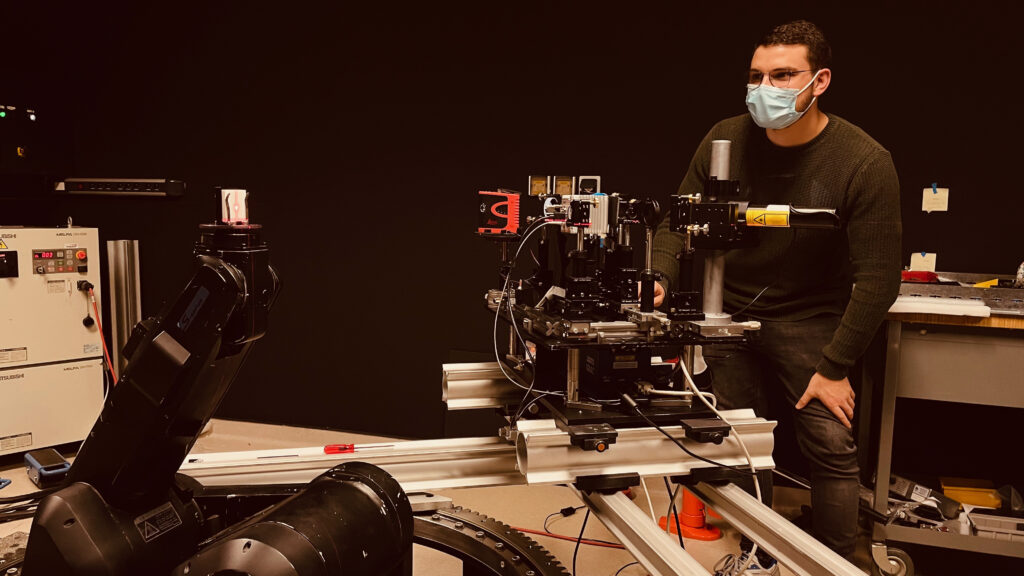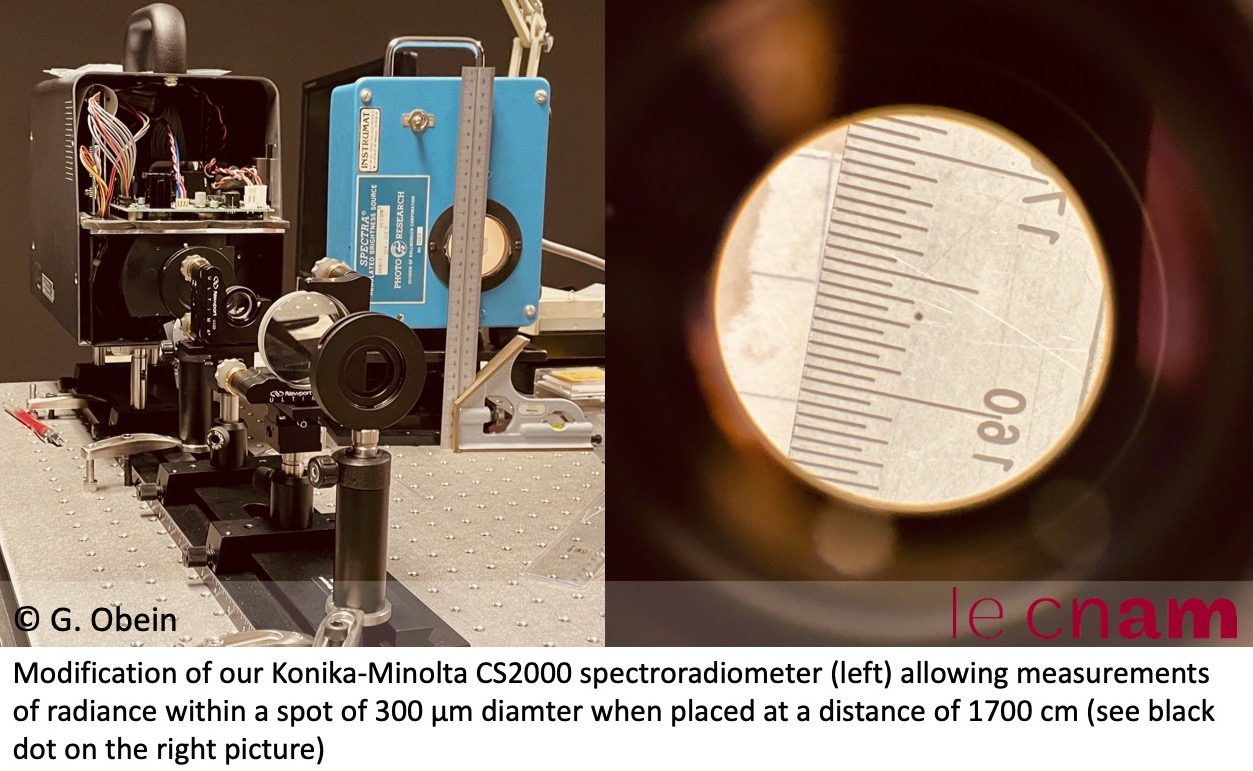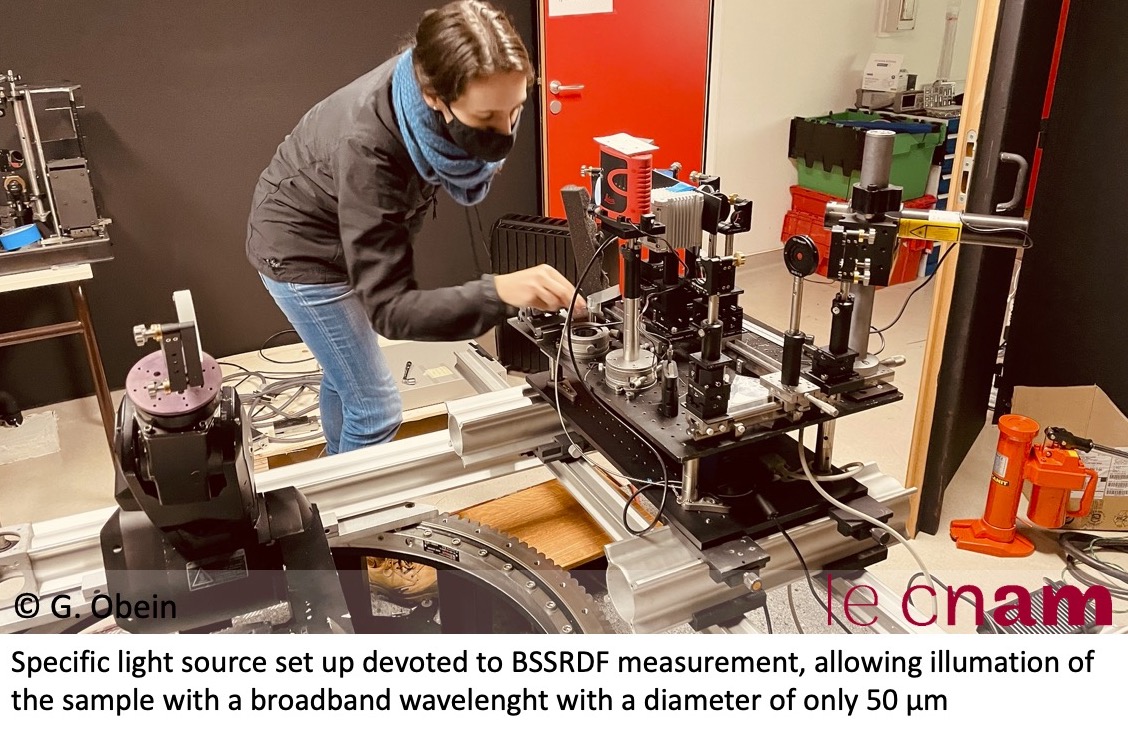This page collects all publishable results of the project, including peer-reviewed scientific papers, conference proceedings papers and presentations. Visit this page regularly to get the latest updates.
The project consortium issues periodically a publishable summary (see below), reporting about the latest achievements of the project.
Publishable summary – January 2021
Improvement of the measurement uncertainty of BRDF
The measurement uncertainty for BRDF measurements will be improved by addressing advanced metrological issues such as polarisation and speckle induced side effects. A paper that describes methodology to assess polarization-related effects for the measurement of the BRDF has been published in Metrologia in June 2020.
The impact of speckle on BRDF is more important when measuring glossy surfaces and becomes the major component of uncertainty for an angular resolution below 0.1° even with wavelength spectral bandwidth higher than 50 nm. To support this study, NCS has developed special glass samples based on selected levels of the NCS gloss scale. In parallel, UJM has adapted the theory of speckle to the specific field of BRDF measurement. Simulations based on this theoretical work show results that are similar to measurements. Theoretical and experimental approach are now being merged to find a way to clean the speckle from BRDF measurements.

Additionally, the first comparison of BRDF scales realised with primary facilities will be performed at angular geometries including out-of-plane geometries. Rotation of the measurements at the 5 participating NMIs has been agreed. First participant (CSIC) has already completed its measurements.
Metrological traceability of the BRDF from micrometre to centimetre scale
Metrological traceability of BRDF will be extended by focusing on specific metrological issues related to scalability of BRDF measurements of small size area. The bibliographic study on BRDF measurements of small size areas has been completed. Two types of micropillar structured glass samples and five different types of glass fibre samples have been developed and supplied by SGR. Two other categories of samples (regular cylindrical structures and imitation leather) will also be used. Additionally, a Si roughness standard has been procured. Measurement will start in spring 2021.

Primary reference facilities and standard artefacts for BTDF
Two primary BTDF facilities will be developed to provide traceability for different sample classes or types e.g. frosted glass. The congruence of the scales will be verified by a comparison. The traceability will then be tested in a second round of comparisons using existing goniospectrophotometers at NMIs, as well as commercial set‑ups. 50% of samples requested for these measurements are already available and the more complicated are ordered. A possible link between BSSRDF and BTDF measurands, was worked out in more detail and lead to the publication of a scientific paper link.

Primary reference facilities and standard artefacts for BSSRDF
Based on accurate BSSRDF measurements, scattering and absorption coefficients of materials as well as the phase function, will be computed. This will be the first step towards calibration and measurement capabilities for BSSRDF at NMIs. Discussion on the definition on BSSRDF measurement has quickly merged with the one of the BTDF measurand. Names, symbols and measurement equations have been agreed and this forum produced an important paper published in Optics Express (link). This paper discusses the pertinence of the use of BRDF, BTDF and BSSRDF quantities with translucent materials.
CSIC has developed an image based BSSRDF primary facility for measuring the BSSRDF with an expanded uncertainty lower than 5 %. CNAM is developing a new goniospectrophotometer for BSSRDF measurement during the project. The optical design is completed.


Use and development of models for BRDF, BTDF and BSSRDF
A literature study has been done to determine the state-of-the art in the field of modelling of light diffraction and propagation, with a special emphasis on translucent materials. It covers the different model categories as Monte Carlo path tracing, aperiodic rigorous coupled-wave analysis (ARCWA), finite difference time domain (FDTD) solutions, microfacet models, Rayleigh-Rice and Harvey-Shack models and colloidal suspension methods. This survey has been published in Computer Graphics Forum (link).
Work is still going on to use the measurements points and develop and validate models to access appearance of translucent 3D objects separating the effects of surface- and subsurface scattering. These contributions are expected to be of great value for the graphics community in terms of simulating the appearance of complicated objects.

Development of samples
Without sample there is no measurement. The improvement of BRDF primary scales at MNIs, as well as the development of BTDF and BSSRDF quantities for the measurement of appearance request accurate, durable and dedicated samples. Labsphere, the manufacturer of the well-known Spectralon material, supplied several samples sets for the BRDF comparison. These samples have been custom made to fit the consortium’s need for mounting and handling. Lucideon, who produces of various types of reflectance standards, has provided several types of ceramics that have been used for the investigation of polarization effects in BRDF measurements set-ups. NCS modified their existing technique for producing the famous NCS gloss scale to manufacture a large set of glass samples to be used for evaluating speckle effects in BRDF measurements. Innventia has developed four types of cellulose nanofibrillar (CNF) films with different scattering properties for BTDF investigations. Saint-Gobain has provided several types of samples to be used in the BRDF scale activities and for the speckle investigations. Their general knowledge about glass and its potential and limitations for use as artefacts with specific properties is also being very helpful for the project. Finally, the stakeholder Covestro, the manufacturer of different type of polymers, has been collaborating closely with the project partners to produce several sets of custom-made samples for BSSRDF measurements. By adding particles of different size, material and concentrations to polycarbonate in a well-controlled process, samples with suitable scattering properties were achieved.

All these samples have been collected and studied at RISE to see how to assemble the fragile films or how to cut samples and hold them to be suitable, protected and durable for their intended use later in the project. This close and efficient collaboration between NMIs and manufacturers of material is unique in the field and has been possible only because this project exists.
List of publications
- J. R. Frisvad, S. A. Jensen, J. S. Madsen, A. Correia, L. Yang, S. K. S. Gregersen, Y. Meuret, and P.-E. Hansen: Survey of Models for Acquiring the Optical Properties ofTranslucent Materials, Eurographics 2020, 39(2), 2020
- A. Correia, P. Hanselaer, Y. Meuret: Accurate and robust characterization of volume scattering materials using the intensity-based inverse adding-doubling method,
- Alejandro Ferrero: Fundamental scattering quantities for the determination of reflectance and transmittance, Optics Express Vol. 29, Issue 1 ,pp. 219-231(2021)
- A. M. Calderón, A. Ferrero, J. Campos: “Accounting for polarization-related effects in the measurement of the Bidirectional Reflectance Distribution Function“, Metrologia, 2020
- Pablo Santafé: Medida y transferencia de la unidad de BSSRDF, Proyecto Fin de Master en Tecnologias Opticas y de la Imagen (TOI) – Master Thesis
- Pablo Santafé-Gabarda, Primary facility for traceable measurement of the BSSRDF, Optics Express Vol. 29, Issue 21, 2021
- T. Labardens et al : “Study and simulations of speckle effects on BRDF measurements at very high angular resolution“, IS&T Electronic Imaging Symposium, Material Appearance Conference, 2021
- Irina Santourian: Uncertainty budget for PTB’sgonioreflectometers and ways to improve it in the short VIS spectral range, Metrologia 59 (2022)
- Pierre Chavel: Advocating a statistical definition for the BRDF, J. Phys.: Conf. Ser. 2149 , Newrad 2021
- Irina Santourian: Novel LED-based radiation source and its application in diffuse reflectometry and polarization measurements, J. Phys.: Conf. Ser. 2149 , Newrad 2021
- Zhanpeng Ma et al, Harvey-Shack theory for converging-diverging Gaussian, Journal of the Optical Society of America B – approved, awaiting publication
- Ellie Molloy et al, Effects of rotation errors on goniometric measurements, Metrologia 59,2022
- Nina Basic et al, Intercomparison of bidirectional reflectance distribution function (BRDF) measurements at in- and out-of-plane geometries, Applied Optics approved, awaiting publication
Presentations and posters
Presented at the Eurographics 2020 conference on 2020-05-28:
- Optical properties of translucent materials. Presenter: Jeppe Revall Frisvad. [slides] [video]
- Model classification. Presenter: Jeppe Revall Frisvad. [slides]
- Measurement setups. Presenter: Søren Alkærsig Jensen. [slides] [video]
- 3D Objects. Presenter: Søren Kimmer Schou Gregersen. [slides] [video]
- Forward and inverse radiometric models. Presenter: António Correia. [slides] [video]
- Field models. Presenter: Poul-Erik Hansen. [slides] [video]
An overview of the presentations from Eurographics 2020 is available in this webpage created for the publication: https://people.compute.dtu.dk/jerf/cg-opt-props.html
Jinglin Fu, Preliminary Results of Angle-Resolved BTDF, Colour and Visual Computing Symposium 2022 (CVCS 2022)